Is Dropshipping Dead in 2025? Honest Take & Expert Guide
I'm looking for...
Is dropshipping dead in 2025? Not even close.
In this post, I’ll break down the facts, trends, and real success strategies so you can decide if it’s still worth starting—and exactly how to do it right.
Create Your Online Store in just 5 Minutes – For Free
Pick your niche, our AI builds your store, add 10 winning products and we teach you how start selling today. Start picking your niche
Is Dropshipping Really Dead? What You’ll Learn:
 Is Dropshipping Dead in 2025?
Is Dropshipping Dead in 2025?No. Dropshipping is expected to grow to $464 billion by 2025. Tools, automation, and niche branding make it a profitable model — for those who adapt.
 5 Reasons People Think Dropshipping Is Dead
5 Reasons People Think Dropshipping Is DeadCommon misconceptions include easy market entry, saturated niches, impatience, unrealistic goals, and trying to do it all alone. Each can be avoided with proper strategy and planning.
 Real Success Stories
Real Success StoriesFrom Jordan Welch hitting $1M in 8 months, to AC Hampton’s $1.7M one-product store, these entrepreneurs used niche focus, paid ads, and persistence to thrive.
 Tools That Make Dropshipping Work in 2025
Tools That Make Dropshipping Work in 2025Use Shopify for your store, AutoDS for automation, Google Trends for product research, and Meta Ads Library for ad strategy. These simplify every step.
 Step-by-Step: How to Start Dropshipping in 2025
Step-by-Step: How to Start Dropshipping in 2025- Find a Product: Use Google Trends, Minea, or Sell The Trend to identify demand.
- Pick a Supplier: Use Dropshipping.com or AutoDS supplier directory.
- Choose a Platform: Shopify for full control or Amazon/eBay for traffic.
- Build Your Store: Focus on mobile design, fast loading, reviews, and branding.
- Market Smart: SEO, paid ads, email campaigns, and video content help attract sales.
- Support Customers: Use live chat like Tidio and offer smooth returns.
- Personalize Experience: Recommend items based on behavior using apps like ReConvert.
 What Reddit and Real Dropshippers Are Saying
What Reddit and Real Dropshippers Are SayingRedditors on r/dropship confirm the model works — if you avoid saturated products and build true brands. Many started with small wins and scaled slowly.
 Dropshipping Pros and Cons
Dropshipping Pros and ConsPros: Low startup costs, no inventory, scalable, wide product range, flexible schedule.
Cons: Low margins in some niches, limited inventory control, legal issues, and fierce competition.
 FAQs: Is Starting Dropshipping It Too Late, Legal, or Profitable in 2025?
FAQs: Is Starting Dropshipping It Too Late, Legal, or Profitable in 2025?Is it too late? No — tools and demand are stronger than ever.
Is it legal? Yes — just follow local business laws.
Is it profitable? Very — with the right supplier, niche, and ad strategy.
Is Dropshipping Dead in 2025?
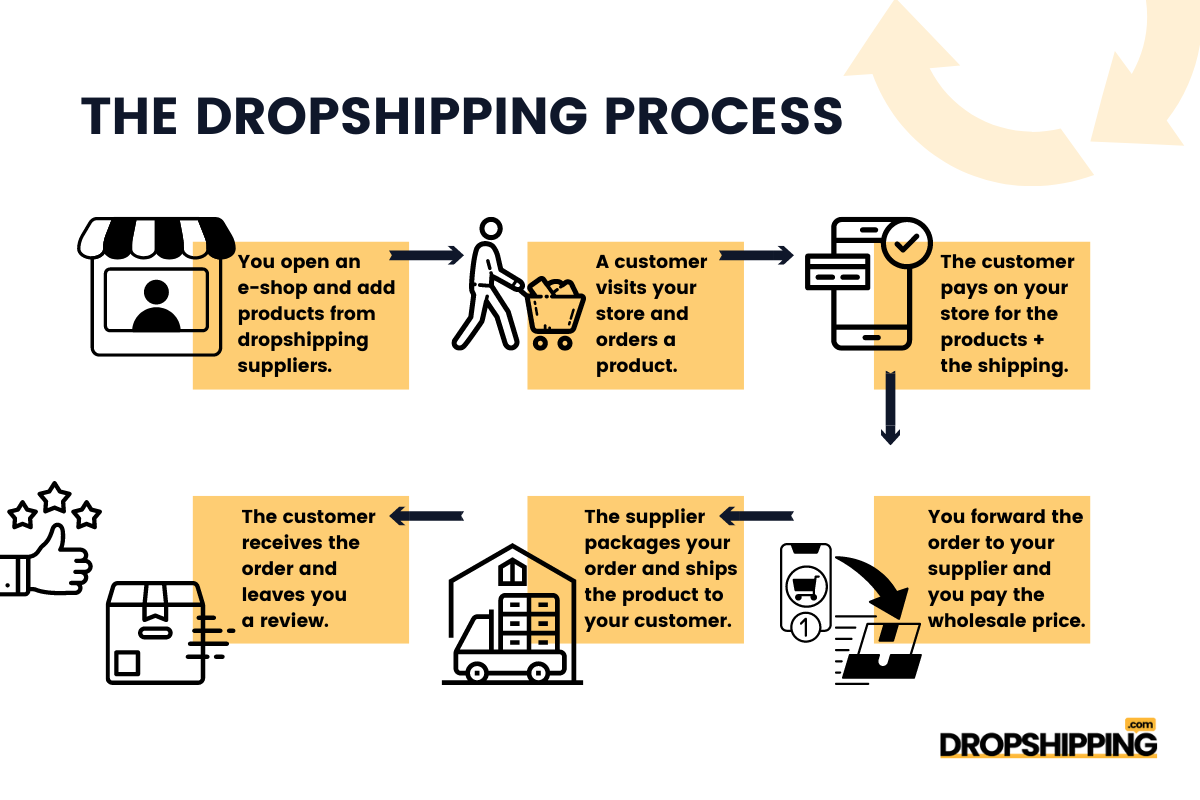
Let’s clear the air right away: Dropshipping is not dead! I know you’ve probably heard people saying it’s a thing of the past, but that’s far from the truth.
The dropshipping landscape has definitely evolved, and there are new challenges to face, but the opportunities are still very much alive for those ready to adapt and innovate.
For example, the global dropshipping market is expected to keep growing to $464 billion in 2025.
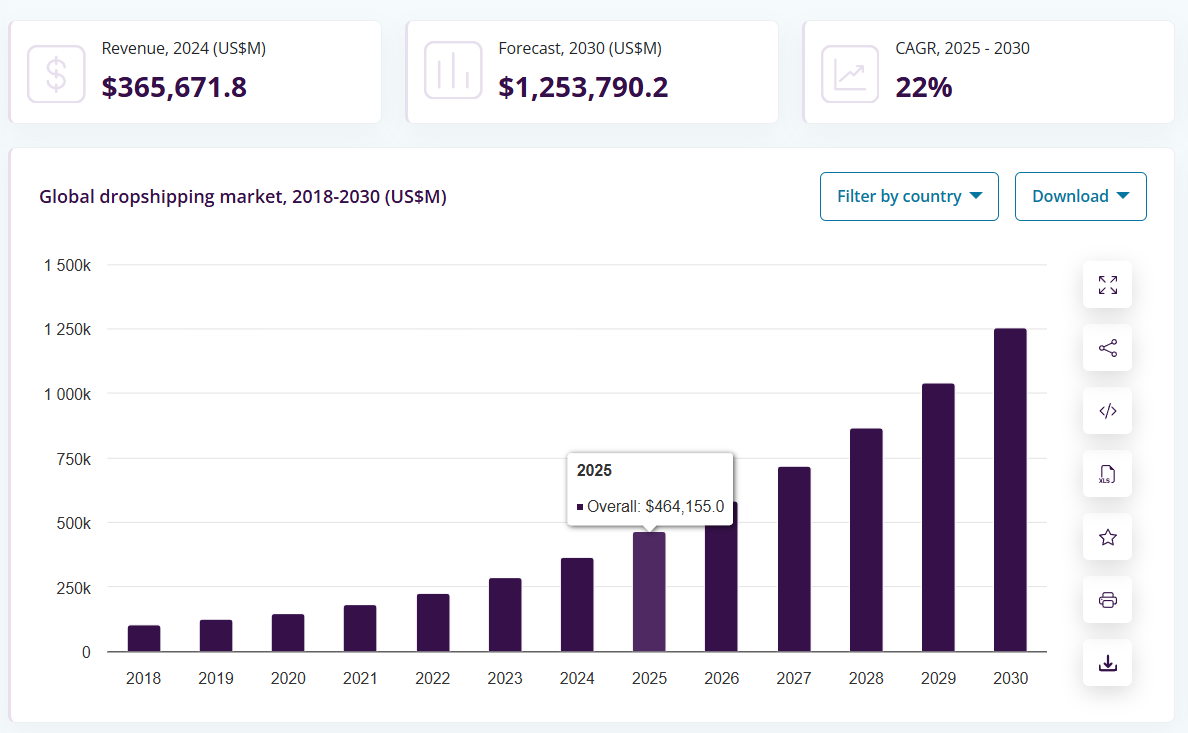
So, what does this mean for you? There’s still plenty of room to succeed if you know how to navigate shifting trends, use the latest technologies, and apply smart strategies.
Instead of writing off dropshipping, let’s look at the facts and see why it’s still a strong option for ambitious entrepreneurs in 2025. Don’t believe me? Let’s type “dropshipping” into Google Trends and see what we find!
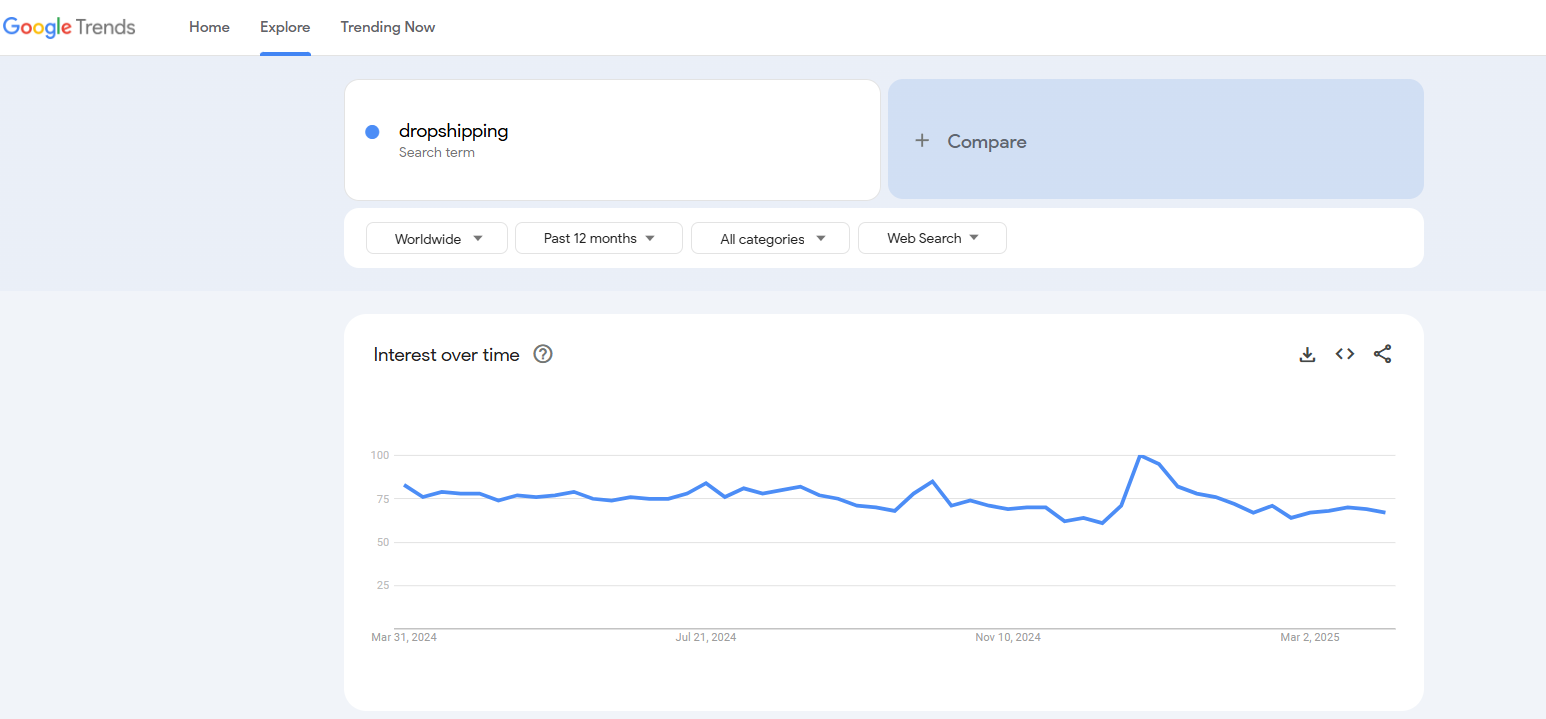
Also, Google Trends will tell you that the dropshipping business model has significantly increased over the past few years. Let’s use it right now.
I will type “dropshipping” into Google Trends and see how it goes. Wow, it has drastically grown since 2021.

Although drop shipping is quite popular in 2025, your success in the industry depends on your ability to adapt as a new e-commerce entrepreneur. According to still alive Google Trends, the interest in dropshipping has remained strong over the past five years, countering common misconceptions about its viability.
In short, dropshipping in 2025 will still work if you are willing to approach it the right way and follow the perfect strategies.

IDEA: Learn more about the concept of Reverse Dropshipping!
 Dropshipping is not dead in 2025. It’s evolving. While competition and poor practices have hurt its image, smart branding, niche focus, and modern tools make it very much alive. Skip the outdated AliExpress methods and build a real brand with a loyal audience.
Dropshipping is not dead in 2025. It’s evolving. While competition and poor practices have hurt its image, smart branding, niche focus, and modern tools make it very much alive. Skip the outdated AliExpress methods and build a real brand with a loyal audience.
6 Main Reasons Why Dropshipping Is Considered Dead in 2025
 Dropshipping 2026: Key Predictions
Dropshipping 2026: Key Predictions
-
Market Expansion:
The global dropshipping market is projected to reach $583.4 billion by 2026, reflecting massive year-over-year growth.
-
E-commerce Growth:
Online sales are set to soar to $7.4 trillion, and dropshipping will remain a central force in that expansion.
-
Mobile Shopping Surge:
With 75%+ of users expected to shop on their phones, mobile-friendly stores are no longer optional—they’re essential.
-
AI Integration:
From inventory forecasting to smart upsells, AI will drive smarter, more personalized dropshipping experiences.
-
Sustainability Focus:
Eco-conscious consumers will drive demand for green products, making sustainable dropshipping a competitive edge.
Before explaining the best strategies to succeed in dropshipping in 2025, let’s see why this business model is considered dead in the first place.
 It is Fairly Easy To Enter The Market
It is Fairly Easy To Enter The Market
 It’s Easy To Enter
It’s Easy To Enter
Dropshipping is low-barrier, so everyone tries it without preparation. This causes a flood of low-effort stores.
What to do? Focus on building a real brand. Use Canva to design a professional logo and visual identity that stands out immediately.
Online and brick-and-mortar stores usually require a lot of investment to develop, manufacture, and source goods. Also, maintaining a physical presence, holding inventory, and packaging costs can add up!
On the other hand, selling goods online without holding any inventory or dealing with shipping appeals to many, particularly those just starting.
Dropshipping has a lower barrier to entry since the dropshipper does not have to invest in warehousing or manufacturing.
This business model requires a low initial investment, which makes it a fantastic opportunity for any new online merchant. What’s more, the rise of technology is lowering the barrier to entry. This enables anybody with a laptop and a good internet speed to start a dropshipping business.
Although dropshipping might be easy to enter, it is not easy to succeed. Various marketing platforms make dropshipping easy for users by simplifying the process, but success still requires careful planning and skill. So, if you think this is one of the reasons dropshipping is failing, you are wrong!
Dropshippers fail because they think it is a get-rich scheme.
Let’s go through an example.
For instance, the richest dropshippers talk about how dropshipping is not a get-rich scheme and that you should try to succeed.
At 18, Cole Turner dipped his toes into dropshipping with the goal of earning some cash. His initial attempt, a store selling plants and pottery, didn’t quite take off.
Undeterred, he switched gears to a general store, offering various items to different folks. The turning point came when he shifted his focus to selling jewelry online. Leveraging niche marketing and Facebook ads, he raked in more than 75,000 sales.
Seeing an opportunity, he sold his successful jewelry store to a Facebook entrepreneur for $20,000. Cole then teamed up with a partner for a new dropshipping venture, identified profitable products, and applied his marketing savvy to push sales beyond $700,000.
Buoyed by this success, Cole launched yet another store. This time, he tuned into what people wanted and struck gold with a popular homeware item. With clever Facebook advertising, the store made significant profits, tallying over 2.1 million dollars in sales since March 2019.

 The Market is Saturated, and the Competition is Fierce
The Market is Saturated, and the Competition is Fierce
 The Market Feels Saturated
The Market Feels Saturated
There are thousands of stores selling the same generic products, which creates tough competition.
What to do? Use Adserea or Minea to find unsaturated, problem-solving products with strong demand.
The dropshipping market is saturated due to the low barrier to entry and the low initial investment requirement. Since very little capital is required to start a dropshipping business, many people are trying their luck at the dropshipping market.
And this means a lot of competition. Some even believe there is no space for new businesses and that all the niches an online merchant can sell in have been taken over.
But this does not have to be super-dramatic. Fierce competition does not mean the end of the world.
If you are willing to learn and invest time, you can survive in the cruel, competitive market and beat the competition.
Plus, various Competitor analysis tools can help you spy on your competitors and develop better marketing strategies.
For example, I use Semrush. Thus, Semrush’s Organic Research tool’s “Competitors” report finds organic competitors. You can start by entering your domain and clicking “Search.”
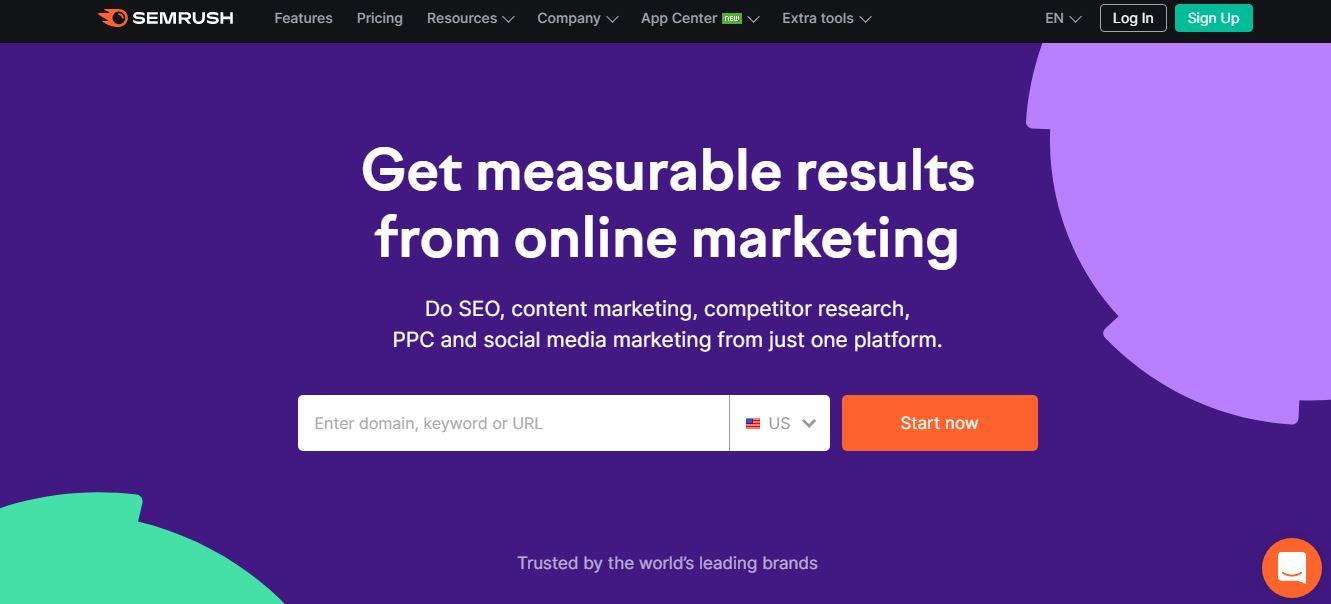
Hence, in the “Competitors” tab you can view a list of organic competitors sorted by Competition Level.
Plus, Similarweb also helps me get insights into competitor ad performance, including traffic sources and conversion rates.
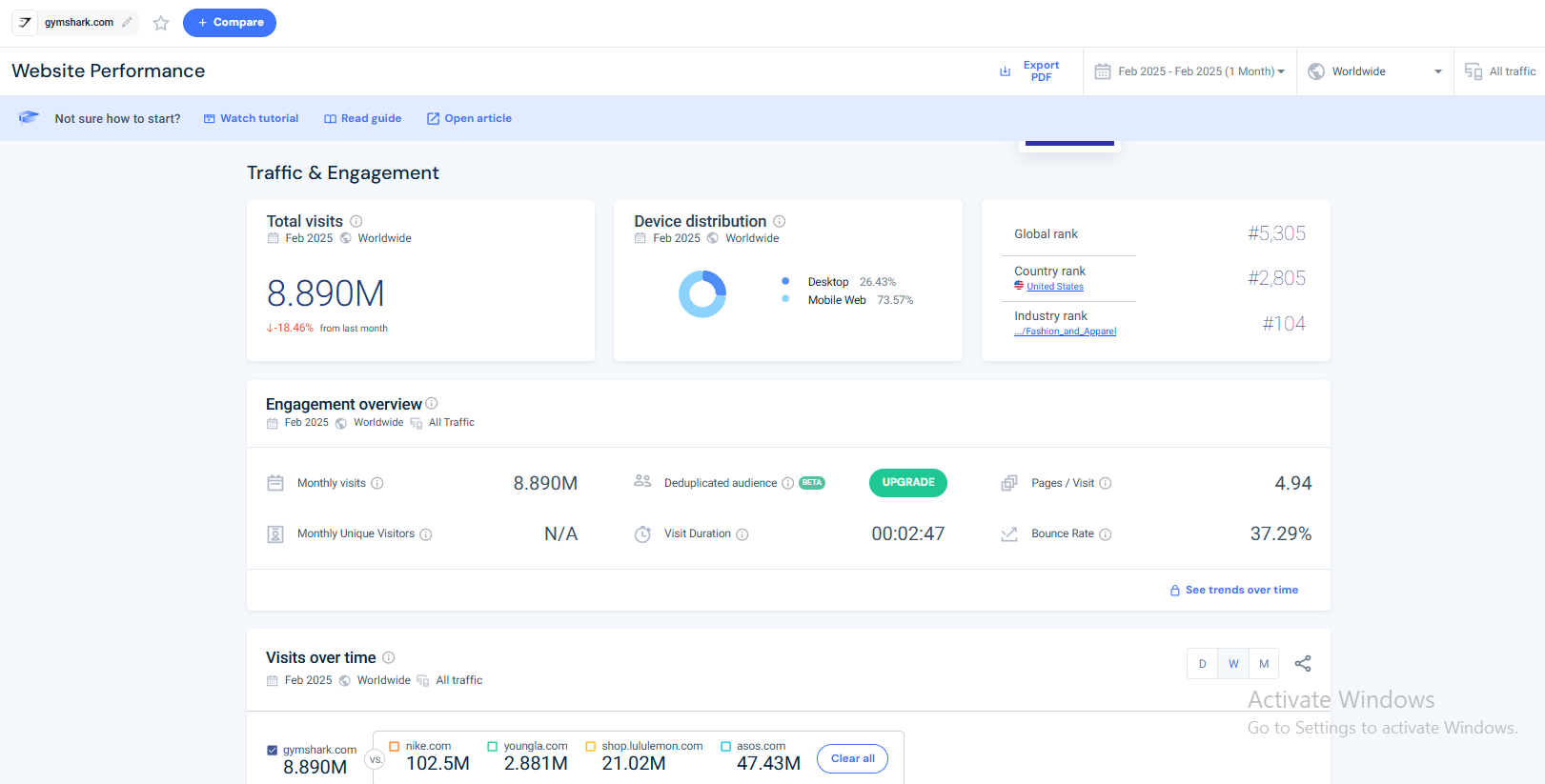
Thousands of stores are selling the same TikTok-viral products with generic branding. That’s why many new dropshippers give up early—they think there’s no room left.
What to do: The truth is, 2025 saturation is not the problem—lack of creativity is. Thus, tools like Minea, AdSpy, and Sell The Trend help you uncover unique, unsaturated, problem-solving products that others miss.
 Lacking Patience and Persistence
Lacking Patience and Persistence
 Lack of Patience
Lack of Patience
Many quit after a few weeks if they don’t see instant results. But success comes with testing and time.
What to do? Set 90-day goals. Track your progress using Notion or Trello to stay motivated and organized.
A lot of people ask, “Is dropshipping dead?” The answer is no, but many dropshippers expect fast results with minimal effort, which often leads to failure.
To build a successful dropshipping business, you must understand that this business model requires time and dedication. Dropshipping might not be for you if you’re hoping to make a quick million.
Also, a lot of people expect instant results. After watching 60-second TikTok success stories, they believe they’ll hit $10K in 2 weeks. The reality? It takes time, testing, and effort.
What to do: Set 90-day goals. Track your progress using Trello or Notion, and give each store enough time to collect data and optimize.
Remember, dropshipping is definitely about patience. You must wait for results, so keep pushing forward, and success will follow.
 Not Setting Realistic Goals
Not Setting Realistic Goals
 Unrealistic Goals
Unrealistic Goals
Setting goals like “make $1M in 3 months” without skills or budget sets you up for disappointment.
What to do? Start with a realistic goal like $1K/month in profit. Use AutoDS to automate and optimize product research, pricing, and order fulfillment.
Many new owners of dropshipping stores get caught up in their “big idea” and make mistakes. Plus, many aim to make six figures a month with no product knowledge, no ad budget, and no plan.
When that doesn’t happen, they blame the model.
It’s important to set realistic and attainable goals if you want your dropshipping business to succeed.
This business model differs from others, like affiliate marketing, so plan each step carefully. When considering dropshipping vs affiliate marketing, remember that while dropshipping can yield higher profits, it requires more setup and preparation compared to the commission-based approach of affiliate marketing.
Instead of saying, “I want to make $2 million a year,” think about what’s actually possible given your target market and the product quality you can provide.
Focus on setting specific goals that align with what is achievable in the evolving tech industry.
What to do: Be realistic. In 2025, a healthy goal for new dropshippers is $1K–$3K/month profit within the first few months if you do it right. That’s the foundation you build on.
 Trying to Do Everything Alone
Trying to Do Everything Alone
 Trying To Do Everything Alone
Trying To Do Everything Alone
Running ads, building your store, answering emails — it’s overwhelming and leads to burnout.
What to do? Use Tidio for automated live chat support and Fiverr to outsource tasks like ad creatives and product descriptions.
Dropshipping businesses appeal to those who want to start an online store without managing inventory, but don’t make the mistake of doing everything alone.
As your sales grow, your tasks, including managing shipping costs and ensuring product quality, will increase.
Whether you’re using Shopify dropshipping, Amazon dropshipping, or any other platform, remember you can’t do it all by yourself.
Hence, you could use help to manage tasks effectively, especially when dealing with a dropshipping supplier.
Remember, you’re not alone in this; learn from others who have gone through similar challenges.
 Still Using Outdated Tactics
Still Using Outdated Tactics
 Still Using Outdated Tactics
Still Using Outdated Tactics
Many people think dropshipping is dead because they’re still using 2017 tactics—copying AliExpress products, offering 30-day shipping, and skipping branding entirely.
What to do? In 2025, success comes from faster delivery, localized suppliers, strong customer service, and creating branded shopping experiences. Use U.S. or EU-based suppliers like Spocket or Syncee, showcase customer reviews with Loox, and treat your store like a real DTC brand.
Many people think dropshipping is dead because they’re still using 2017 tactics—copying AliExpress products, offering 30-day shipping, and skipping branding entirely.
In 2025, success comes from faster delivery, localized suppliers, strong customer service, and branded shopping experiences.
What to do: Use U.S. or EU-based suppliers, build real trust with social proof, and sell like a modern DTC brand.
Is Dropshipping Still a Realistic Choice in 2025?
Yes — dropshipping is absolutely still a realistic and profitable business model in 2025, and I’m saying this based on real trends, personal insights, and honest conversations happening right now on Reddit.
While it’s not the same as it was five years ago, the opportunity is still wide open for those willing to adapt.
 Dropshipping Is Just One Method of Ecommerce
Dropshipping Is Just One Method of Ecommerce
Let’s start with what most people get wrong: dropshipping is not a business in itself — it’s a fulfillment method. One top-voted Reddit comment summed it up perfectly:
“Is ecommerce still a realistic choice in 2025? Then so is dropshipping.”
Dropshipping lives under the massive umbrella of ecommerce, and according to Statista, global ecommerce sales are projected to hit $4.3 trillion by the end of 2025. That alone should tell you this isn’t a dying space.
As long as people shop online, dropshipping will have a place — especially for lean startups and solo entrepreneurs looking for low-risk business models.
 What Reddit Users Are Saying?
What Reddit Users Are Saying?
Across Reddit, especially on r/dropship, users are still seeing success with smart, niche-focused dropshipping.
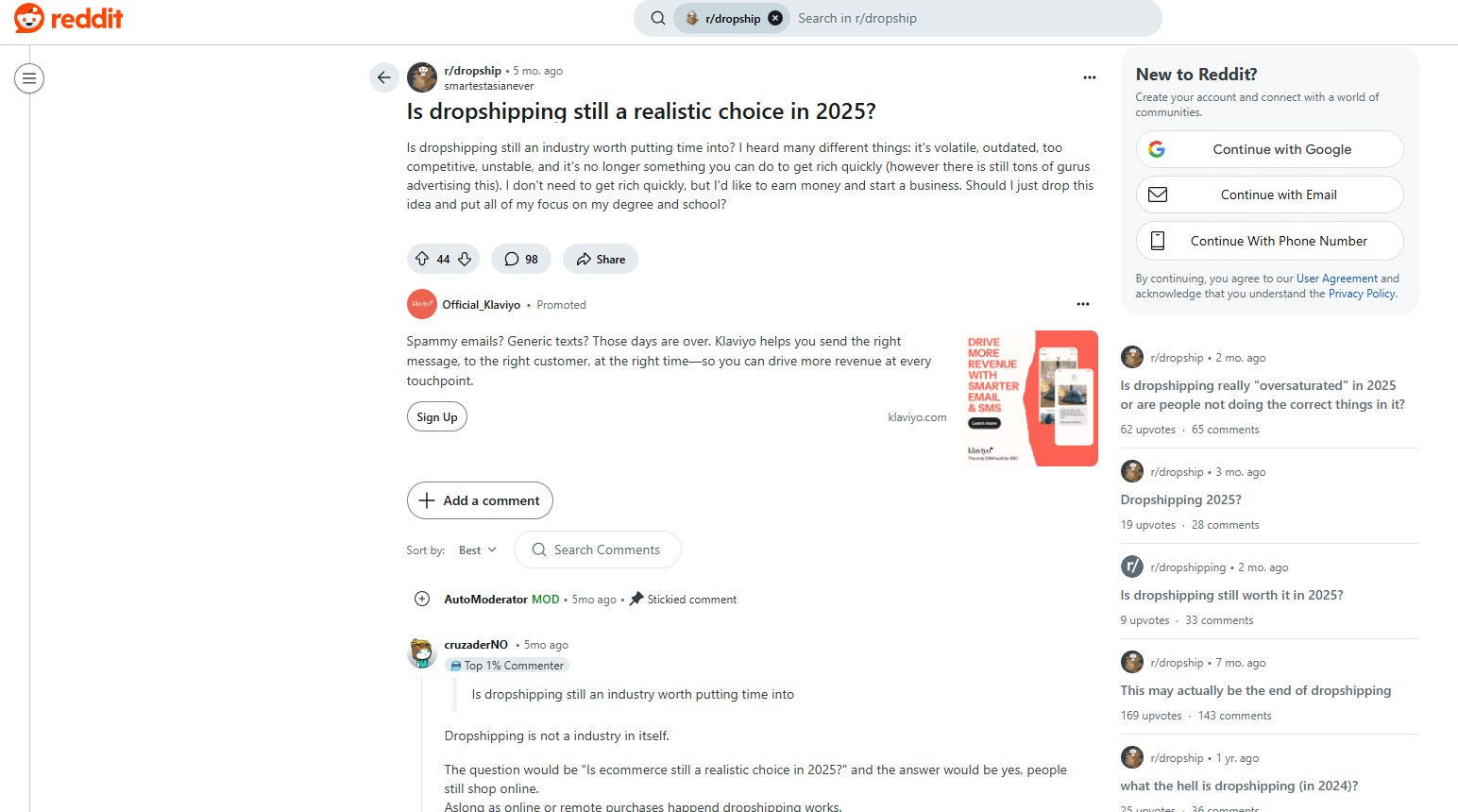
Some mentioned they’re making consistent sales by:
- Using multiple trusted supplier platforms
- Validating product demand through real-world data
- Avoiding saturated TikTok products and focusing on solving real problems
One comment really stood out:
“It’s not saturated — it’s just that most people don’t market or execute properly.”
That couldn’t be more true. Dropshipping in 2025 is less about finding “winning products” and more about crafting the right offer, creative, and audience fit.
 Tools and Platforms Have Evolved
Tools and Platforms Have Evolved
Another reason dropshipping is still thriving? The technology has gotten better. Platforms like Shopify, Wix, and WooCommerce now support seamless integrations with suppliers and automation tools. Even AI-driven apps can help you with ad copy, product descriptions, and customer service.
What used to take hours can now be done in minutes. You can:
- Launch a store in under a day
- Sync it with suppliers via tools like AutoDS or DSers
- Run product tests using TikTok Ads or Meta’s Advantage+ campaigns
- Automate fulfillment, tracking, and even returns
That’s a game-changer for anyone juggling school, a job, or multiple projects — which many Reddit users said they were doing successfully.
 The Truth: It’s Not Easy — But It’s Real
The Truth: It’s Not Easy — But It’s Real
Here’s the honest part: dropshipping is not easy money, and never was. You’re not going to get rich overnight by slapping a product on a website. What worked in 2017 won’t work in 2025.
But if you’re willing to:
- Learn copywriting, creative ad building, and branding
- Research products with real demand
- Build a legit customer experience
…then yes, you can still win. Many users on Reddit said they started small, failed a few times, and eventually saw results by treating dropshipping like a real business.
It’s 100% Still Worth It!
So, is dropshipping a realistic choice in 2025? Yes — without a doubt.
It’s changed. It’s more competitive. But it’s also more scalable, more accessible, and more rewarding for those who commit.
Don’t let the noise fool you. As one Redditor said:
“The business model works. It’s just the person operating that vehicle that determines whether it succeeds.”
If you focus on solving problems, picking smart products, and running solid marketing — dropshipping can still be your best move in 2025.
Is It Too Late To Start Dropshipping In 2025?
Of course not! It is never too late to start a dropshipping business. We know that getting your foot in the door of a new industry, especially dropshipping, is not that simple.
Thus, dropshipping is not dead, and it is not too late to start.
However, as I mentioned, you can conquer the dropshipping market with a lot of patience and the perfect business plan and strategy. Here is how to do that:
How to Start Dropshipping In 2025? ( My Step-By-Step Success Guide)
 Step 1: Find The Perfect Products To Sell
Step 1: Find The Perfect Products To SellYou can’t sell just anything and expect success. Focus on **solving real problems** within a niche. Use tools like Google Trends, Keywords Everywhere, or Minea to validate demand. For instance, search “yoga mats” in Google Trends to evaluate interest.
Surveys, Reddit, TikTok comments, and Facebook groups can also help you discover products your audience actually wants.
 Step 2: Find Reliable Dropshipping Suppliers
Step 2: Find Reliable Dropshipping SuppliersYour supplier makes or breaks your business. Platforms like Dropshipping.com or AutoDS have directories of trustworthy suppliers with detailed info on shipping times, product cost, location, and MOQ.
Double-check their order processing time and read reviews. Consider test orders before scaling up!
 Step 3: Select Your Selling Channel
Step 3: Select Your Selling ChannelPick a platform based on your audience. If you want full control and branding, choose Shopify. If you prefer existing traffic, go with eBay, Amazon, or Facebook Marketplace.
Each platform has pros and cons. Choose one that aligns with your goals and niche.
 Step 4: Create Your Dropshipping Store
Step 4: Create Your Dropshipping StoreDesign your store with a clean, user-friendly layout. Shopify offers amazing free and paid themes. Make sure your branding matches your niche, and optimize your product pages with reviews, descriptions, and urgency badges.
Focus on **mobile responsiveness**, **fast loading**, and **clear navigation**.
 Step 5: Implement Smart Marketing Strategies
Step 5: Implement Smart Marketing StrategiesUse SEO, social media marketing, email campaigns, and paid ads. Tools like Meta Ads Library, TikTok Ads, and Ubersuggest help you analyze what works.
Try cross-selling and upselling with apps like ReConvert to increase your AOV (average order value).
 Step 6: Put The Customer First
Step 6: Put The Customer FirstProvide amazing service with live chat apps like Tidio. Add FAQ sections, transparent shipping times, and follow up with your customers post-purchase.
Great service = more repeat buyers. Make them feel heard and supported.
 Step 7: Personalize the Shopping Experience
Step 7: Personalize the Shopping ExperienceUse behavior-based tools to personalize product recommendations, emails, and ads. For example, if someone buys vegan beauty products, suggest cruelty-free bundles next time.
Leverage tools like Shopify’s built-in product recommendations or apps like ReConvert and Personalizer for advanced targeting.
In this paragraph, we will not talk about how to start a dropshipping business in 2025.
Instead, we will discuss the steps you need to take to succeed in dropshipping in 2025.
Step 1 Find The Perfect Products To Sell
As a new dropshipper, you can choose what to sell. However, you cannot sell anything that comes to your mind and be successful.
The first important thing you must do is carefully choose a lucrative dropshipping niche for your business. Focus on and specialize in one niche and attract the right customers.
You can do that by conducting surveys, joining online communities, and using analytic tools like Keywords Everywhere and Google Trends.
For example, let’s say you want to dropship fitness products or yoga mats specifically. Thus, I will enter the keyword “yoga mats” in Google Trends. Let’s see what I get.
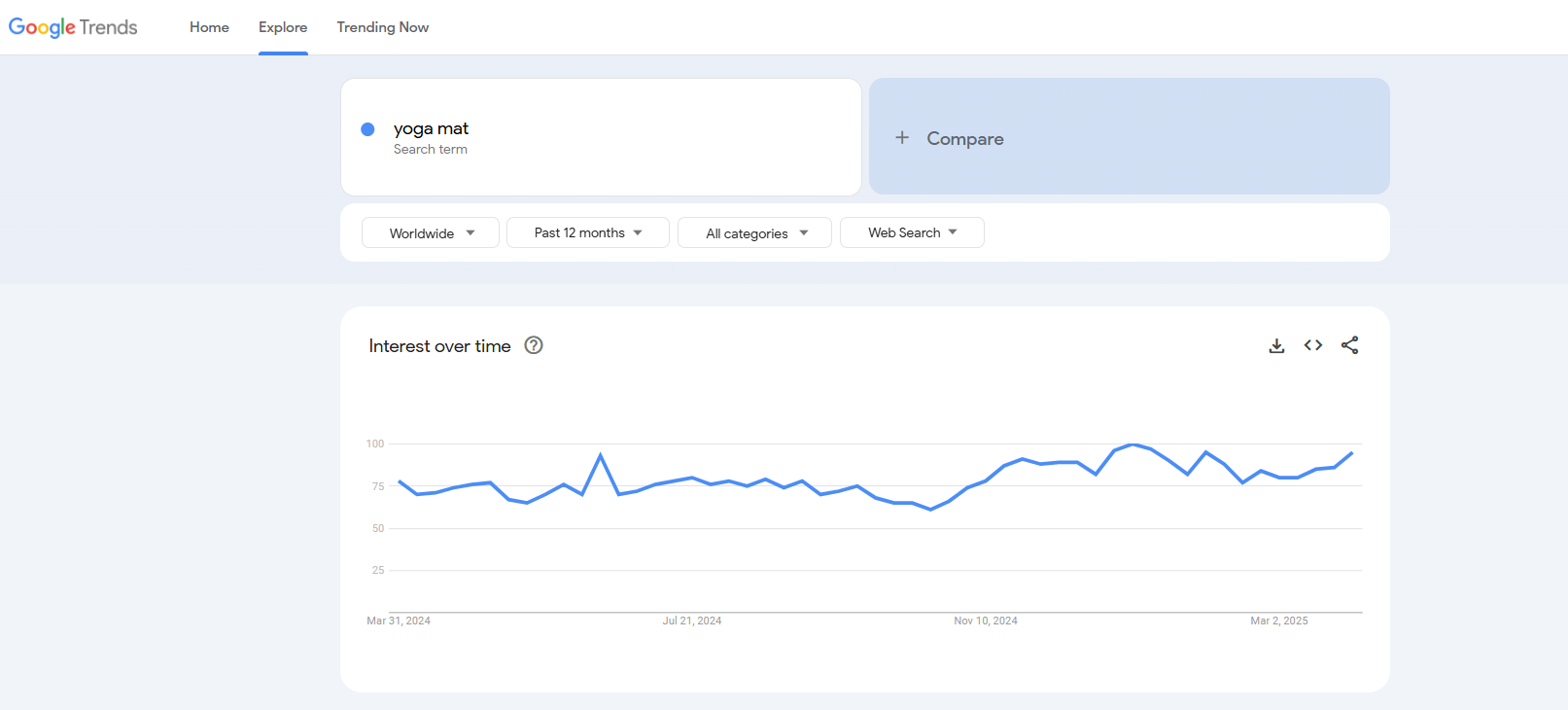
Moreover, I personally use product research tools like Minea to check on product demand, customer engagement, prices, and more.
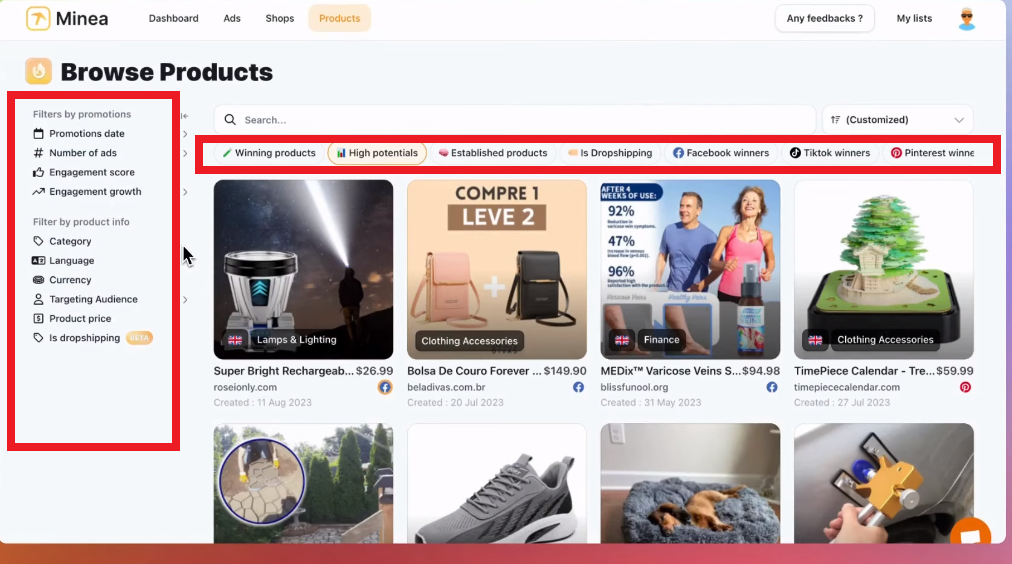
Step 2- Find Reliable Dropshipping Suppliers
Choosing the best dropshipping supplier to source products can be hard but not impossible.
If you work with an unreliable supplier, you will likely receive customer complaints regarding missing items, wrong orders, delivery delays, etc.
So, it is best to choose the right one. Begin by doing your research on Google and joining supplier directories. Then, you can attend trade shows and conferences.
Remember to investigate the supplier’s offering thoroughly, including product quality, minimum order requirements, service potential, and delivery times.
However, using Google as your only source to find dropshipping suppliers might not be the best option.
For instance, many supplier directories like Dropshipping.com or AutoDS actually have dozens of reliable dropshipping suppliers in any niche.
I use Dropshipping.com supplier directory. It lets you arrange suppliers based on categories, niches, or specific filters, including shipping costs, location, and product expenses. Best part? It’s completely free!
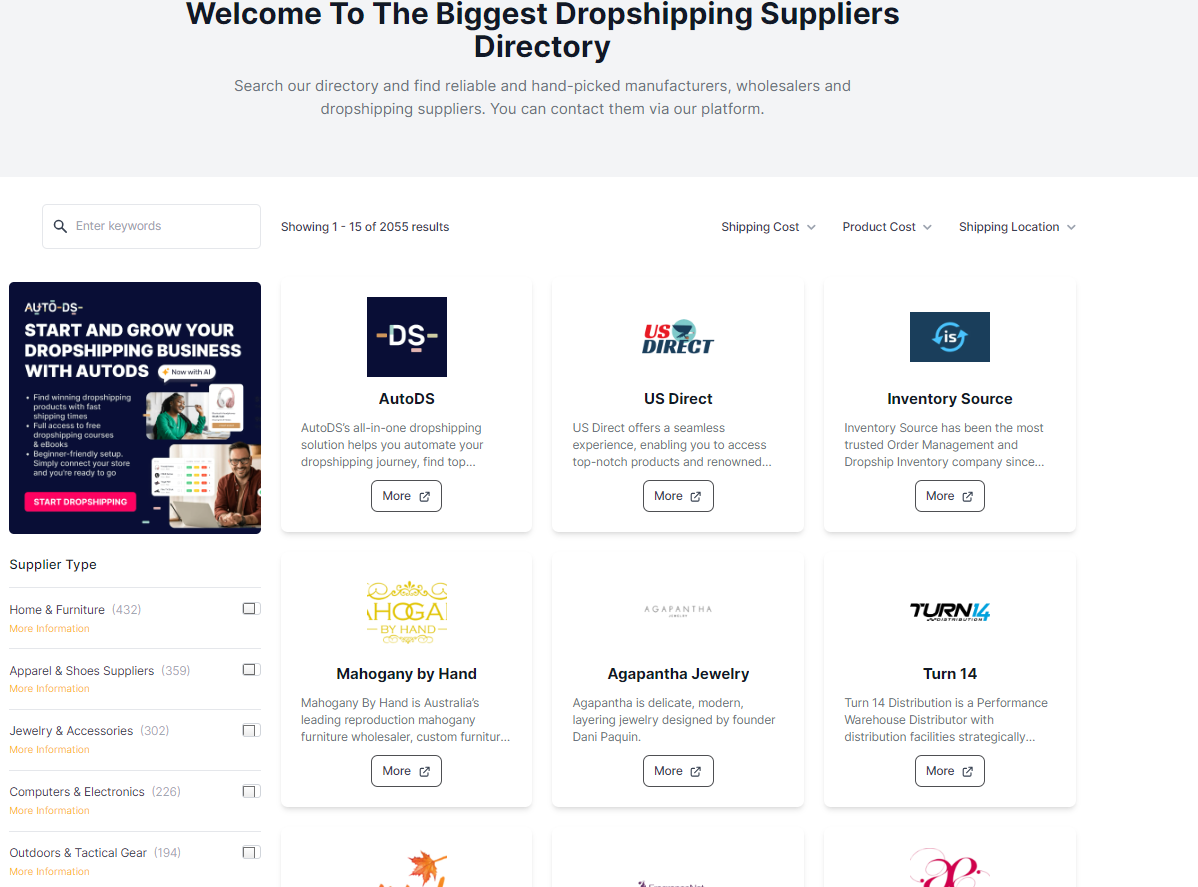
When you select a particular supplier, you’ll find all the essential details at your fingertips, like supplier description, location, product costs, average order processing time, shipping expenses, and the minimum order quantity (MOQ) requirement.
Plus, their contact information is readily available for your convenience.
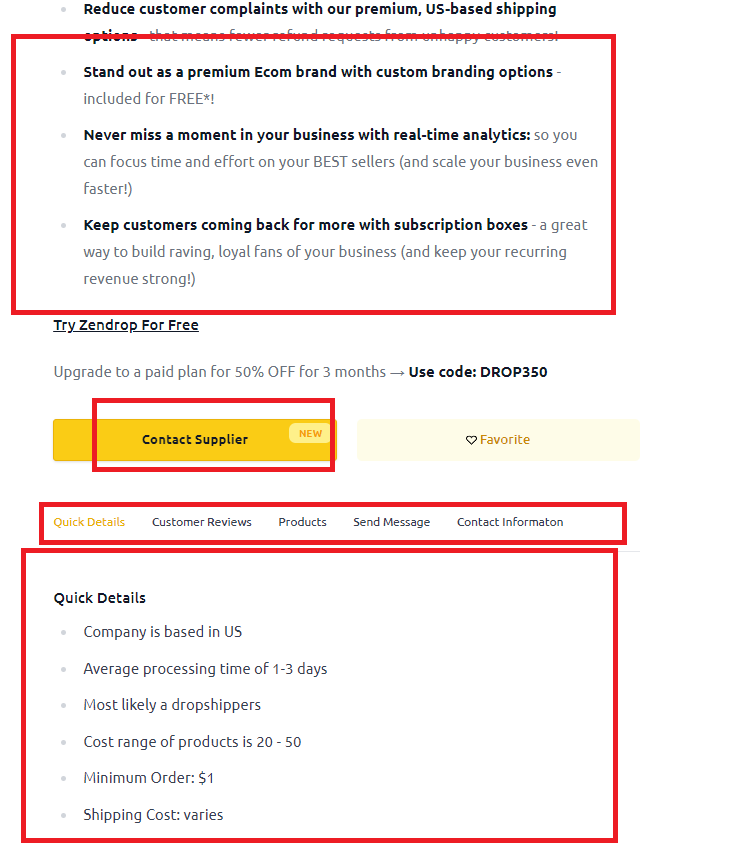

AutoDS supplier directory is also a great choice. It has gathered a list of reliable suppliers from various parts of the world, including big names such as AliExpress, Amazon, Wayfair, CJDropshipping, and others.
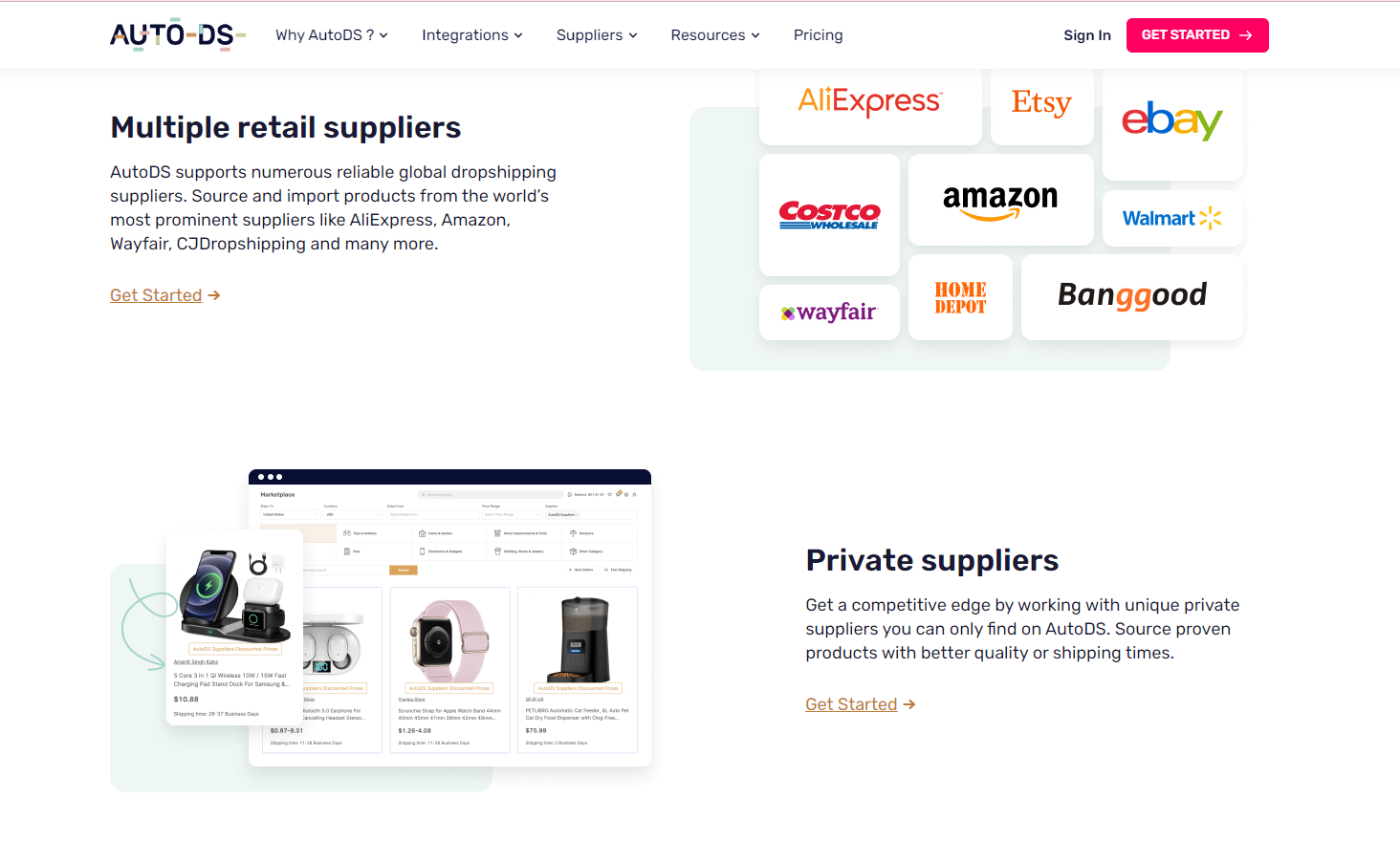
Plus, they have a warehouse located in China, adding convenience and safety to the mix.
Step 3 – Select Your Selling Channel
Choosing the right platform to sell on is essential for making money.
So, a website builder like Shopify allows you to create your own online store, giving you full control over your brand and the customer experience.

Alternatively, selling on Facebook Marketplace allows you to reach local buyers easily, minimizing shipping issues.
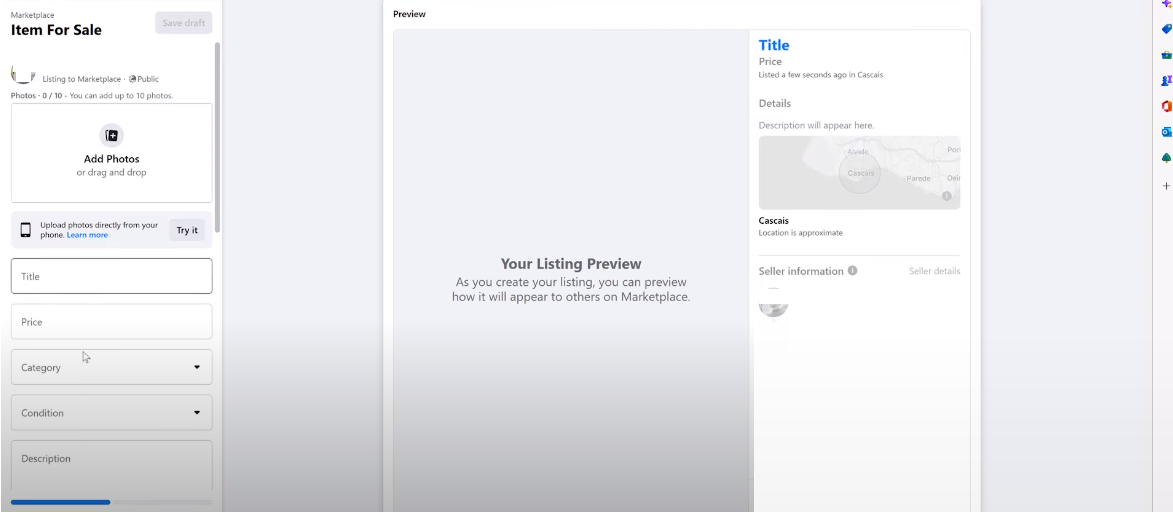
Another route is to sell on established marketplaces like Amazon, or eBay, where you can create a storefront and reach a global audience.
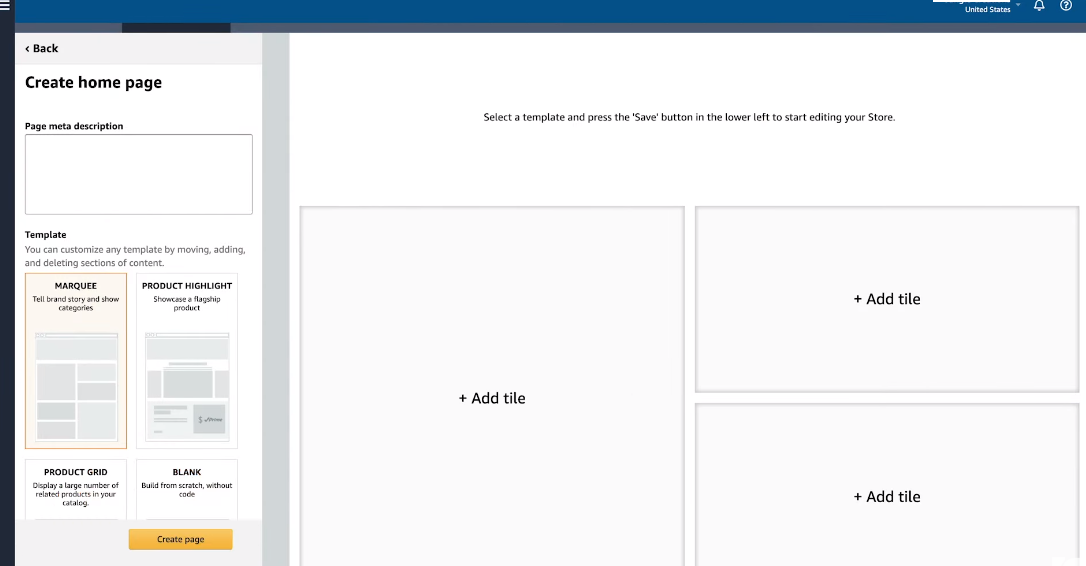
Each option has its own benefits, so pick the one that best matches your business model and target market.
Step 4 – Create Your Dropshipping Store
First things first, design your dropshipping store as a professional brand. Next, harmonize your website design with what you sell.
The good news is there are plenty of website builders out there today. But, if you ask me, Shopify stands out as the go-to for dropshippers.
This platform is easy to use and offers a variety of eye-catching themes, both free and paid, for your dropshipping store. It also packs a bunch of customizable features.

Step 5 – Implement Marketing Strategies
I highly advise you to include a search engine optimization strategy, social media marketing, email campaigns, and paid advertising.
To enhance sales, explore marketing tactics such as cross-selling, upselling, offering discount codes, and creating referral programs.
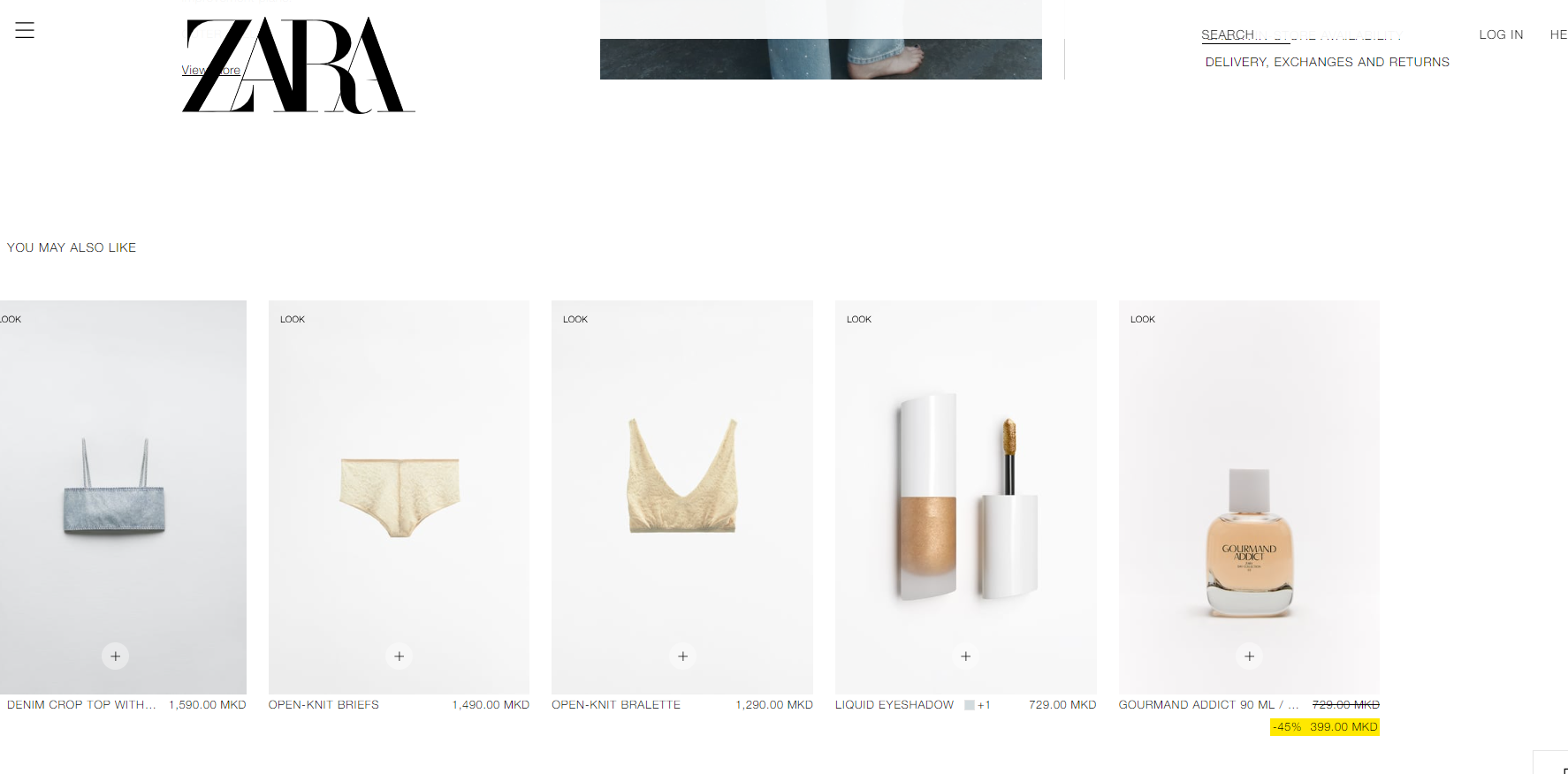
Additionally, integrating video marketing into your dropshipping strategy can be effective. So, use videos to showcase your products visually and demonstrate their usage, features, benefits, and more.
Plus, it makes it easy for visitors to search for and purchase the products they need. Finally, promote your website to get your first sale.
Today, various automation marketing tools can help you simplify your work.
However, I must point out again- the competition in the industry is fierce.
Remember that copying your competitors is the worst way to beat them. You will not succeed in dropshipping in 2025 by doing that. Of course, you can use tools like Meta Ads Library to check what they are doing.
However, find a unique way to present your products.
Instead, you must create a good marketing strategy to stay one step ahead of your rivals.

Step 6 – Put The Customer First
In today’s world, how you sell has become as important as what you sell. So, instead of convincing yourself that dropshipping is dead, why not try to succeed in your business?
It is as clear as day that putting the customer first is an excellent way to differentiate yourself from the competition and build loyalty among your customers.
Let us give an example. Suppose you made a reservation at one of the best restaurants in town to celebrate your anniversary. This restaurant has white tablecloths, chic decor, a breathtaking view, and mouth-watering dishes.
That’s the reason for your reservation, right? But when you arrive there, the waiter is not so polite, and the service is slow. The restaurant is also so noisy that you cannot even hear what your partner is trying to tell you.
Finally, you leave the place disappointed.
Unfortunately, if you focus solely on what you sell and not how you sell, you could be setting your customers up for this experience.
For example, I use Tidio to easily interact with my customers and answer all of their questions.

So why not provide impeccable customer service and acquire customers who will buy from your dropshipping store for years to come?

Step 7 – Focus on Personalizing Customer Experience
In 2025, personalization in dropshipping isn’t just a trend—it’s a core strategy for driving conversions, boosting order value, and building loyalty.
It begins with understanding user behavior—what they search for, click on, and buy—and using that data to create a tailored experience across your store.
Instead of offering generic product listings, customize recommendations, homepage banners, and email content based on browsing history and past purchases.
For example, if a shopper regularly buys vegan” or cruelty-free products, your site should prioritize those items in search results and product suggestions. Plus, you can even suggest them in the shopping cart or Whishlist or right after the purchase.
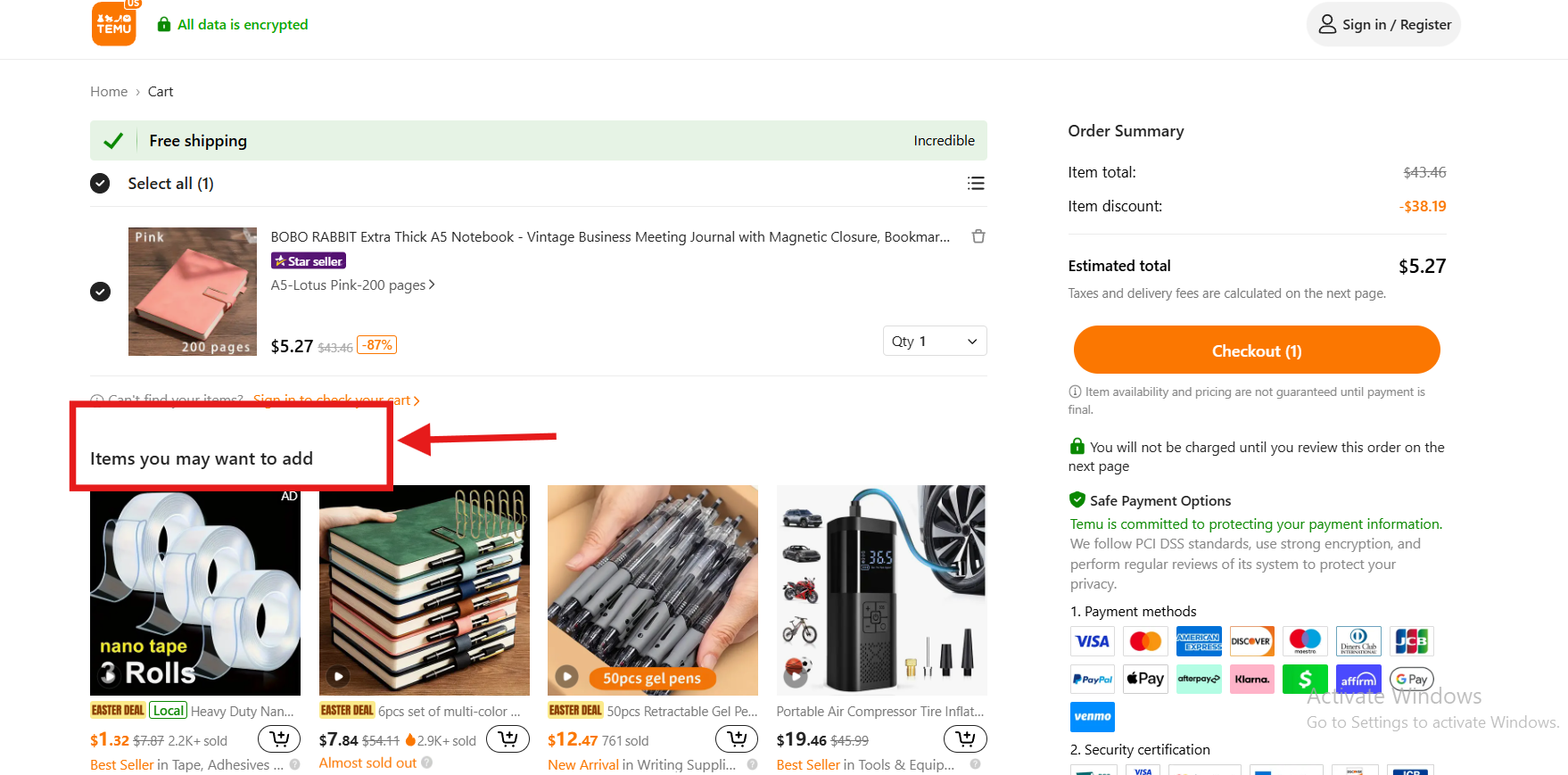
Just like Google personalizes search predictions, your store should surface products that feel relevant and intuitive.
One of the most powerful tactics is to combine personalization with cross-selling and upselling. If someone adds a foundation, suggest complementary items like brushes or setting spray (cross-sell). If they view a basic smartwatch, highlight a premium model with more features (upsell).
These tactics are made easy with tools like Shopify’s native product recommendations or apps like ReConvert.
Brands like Zara and Amazon are leaders in this. Zara’s “Selection For You” displays clothing based on past preferences, while Amazon dynamically suggests bundles, upgrades, and add-ons based on your behavior.
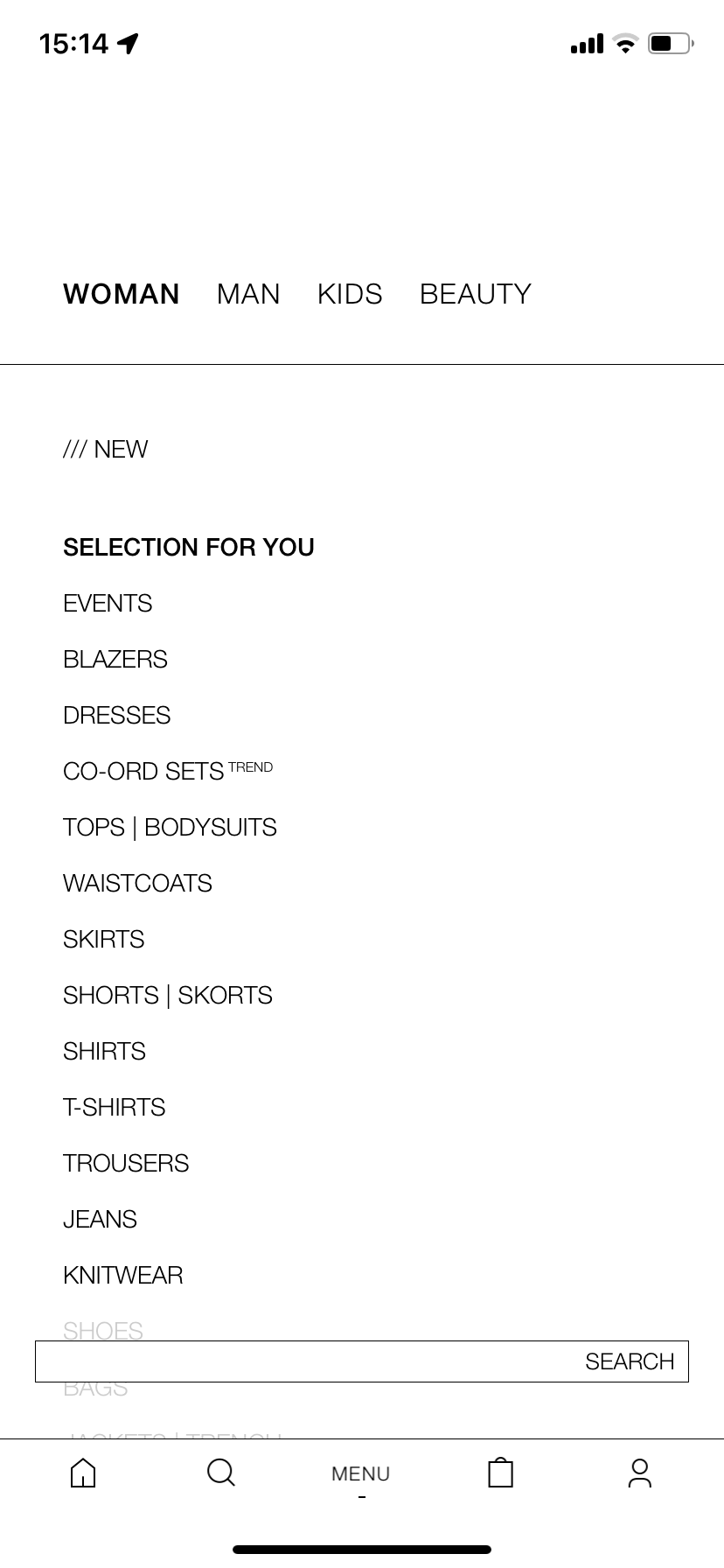
To further refine the experience, minimize irrelevant product clutter by pushing down or hiding items the user rarely interacts with. This helps create a smoother, distraction-free shopping journey.
In short, personalization, paired with strategic cross-sells and upsells, can transform a casual browser into a repeat buyer. When done well, it’s not just helpful—it feels like your store was built just for them.
Most Inspirative Real-Life Stories Confirming That Dropshipping Is NOT Dead in 2025
Jordan Welch – Shopify & Amazon Milioner Dropshipper
Jordan Welch is an inspiring example for anyone looking to start a dropshipping business and achieve significant success.
He began his entrepreneurial journey at 13 with ventures like reselling shoes and launching a clothing line, but it wasn’t until he dove into Shopify dropshipping that he saw real growth.
Within just eight months, his store achieved $1 million in sales, proving that with the right approach, dropshipping is not dead.
Jordan’s experience shows that dropshipping is still profitable when you leverage high product quality and target the right market. He then expanded beyond dropshipping by launching his own brand and custom products, emphasizing the importance of evolving with the fast-evolving tech industry.
In 2018, Jordan launched Viral Vault, a toolkit for beginners wanting to start a dropshipping business or any online store.

Although it took time to turn profitable, his persistence paid off. Alongside his business ventures, Jordan grew a YouTube channel to over 1.45 million subscribers by sharing valuable insights into e-commerce and dropshipping.
His diverse income streams, including earnings from Amazon dropshipping, YouTube ads, affiliate promotions, and investments, have helped him build an estimated net worth of $4 million. His journey is a testament that the dropshipping model is alive and thriving, especially when integrated with various revenue streams.
Andreas & Alexander – $10 Million in Pet Dropshipping Niche
Andreas & Alexander have made a name for themselves in the dropshipping business by generating $10 million in sales within the pet niche.
They succeeded by targeting a specific target market of pet owners, curating quality products that met their needs, and using innovative marketing strategies like Google Trends and Facebook Ads.
Their approach demonstrates that dropshipping requires careful planning and skill, especially when choosing reliable suppliers and understanding product quality.
Their strategy of selling unique products and testing the market thoroughly proves that dropshipping is still alive, according to Google Trends data, and can be highly profitable with the right methods.
Justin Woll – Self-Made Millionaire by Age 23
Justin Woll quickly became a standout figure in the dropshipping business world, reaching self-made millionaire status by age 23.
Starting with ventures like a gaming company and multiple Shopify stores, Justin’s knack for identifying trending products and understanding product quality set him apart.
His business, Beyond Six Figures, focused on e-commerce and dropshipping, has become a leading mentorship agency, helping others navigate the industry.
Justin’s strategic use of Facebook Ads and dedication to building a strong community of followers, with over 210k on Instagram, shows that dropshipping is not dead. Instead, it’s a viable and thriving model for those willing to innovate and adapt to market trends.
AC Hampton – Dropshipping Milioner from a One-Product Store in 2020
AC Hampton started his dropshipping journey while still in college, transitioning from a traditional job to focusing full-time on e-commerce.
To understand the potential of AliExpress dropshipping, let’s look at the aliexpress dropshipping approximate earnings. For instance, if a product costs $5 on AliExpress and is sold for $20, the profit per sale is $15. With an average order volume of 100 orders per month, this translates to $1,500 in monthly profit, or $18,000 annually. By scaling up and optimizing pricing and sales strategies, significant annual earnings can be achieved.
After investing in a dropshipping course, he found a winning product that led to $165K in sales within two months.
Initially using AliExpress dropshipping, AC switched to a dedicated dropshipping supplier as his order volume increased, showcasing the importance of scaling efficiently.
Despite challenges like shipping costs, product saturation, and issues with payment accounts, he pivoted to a one-product store model that brought in $1.7 million in just nine months.
His experience highlights that dropshipping is still profitable and emphasizes the need for careful planning and skill to navigate challenges.
Irwin Dominguez – $1 Million in Only 8 Months

Irwin Dominguez is another great example of why dropshipping is still profitable. He generated $1 million in sales within just eight months by setting up a Shopify store, adding a few products, and mastering Facebook Ads to target the right audience.
Irwin’s approach to identifying profitable niches and using effective marketing strategies demonstrates the ongoing viability of the dropshipping model.
His story proves that, despite what some may say, dropshipping is not dead; rather, it remains a powerful way to build a successful business.
As with many successful dropshipping businesses, his success came from choosing the best suppliers, maintaining product quality, and effectively managing shipping costs to maximize profits.
Dropshipping Pros and Cons
If you still doubt whether dropshipping is dead or not, I must say it is not, but it has its ups and downs. So, let’s list them.
You can read my article to learn more about the pros and cons of dropshipping.
Pros
 Low Startup Costs
Low Startup Costs
Starting a dropshipping business has a significant perk: low startup costs. Unlike traditional retail, you don’t have to invest in inventory upfront.
Thus, there is no need to worry about warehousing and storage expenses. The money you save on overhead costs can be redirected to other critical business areas.
Keep in mind that while building a dropshipping store involves some costs, like finding a domain or using dropshipping tools, there are also many free tools available.
Also, your overall costs depend on your choices, such as subscription plans and marketing tools.
 Low Inventory Costs
Low Inventory Costs
In the dropshipping world, we don’t deal with inventory. This translates to low inventory costs.
Personally, I appreciate not having to spend a large sum on purchasing and storing products. I only pay for items once I’ve received customer payment, reducing the risk of holding unsold inventory.
It’s worth noting that despite not maintaining inventory, dropshippers may still incur costs related to their business operations, such as supplier prices, dropshipping platform fees, and shipping costs.
For, example, if you need help tracking your inventory, I recommend you try Inventory Source automation software.

 Lower Order Fulfillment Costs
Lower Order Fulfillment Costs
Good order fulfillment is essential, and dropshipping excels here. With no need to hold inventory, you benefit from lower order fulfillment costs than other business models.
Dropshipping allows you to avoid the risks and expenses of excess inventory. Your dropshipping suppliers handle the entire process, from picking to shipping.
This not only saves costs but also provides comprehensive reports and analytics for better business management.
For instance, I personally use ShipBob to fulfill my orders. Thus, it really helps me lower order fulfillment costs.
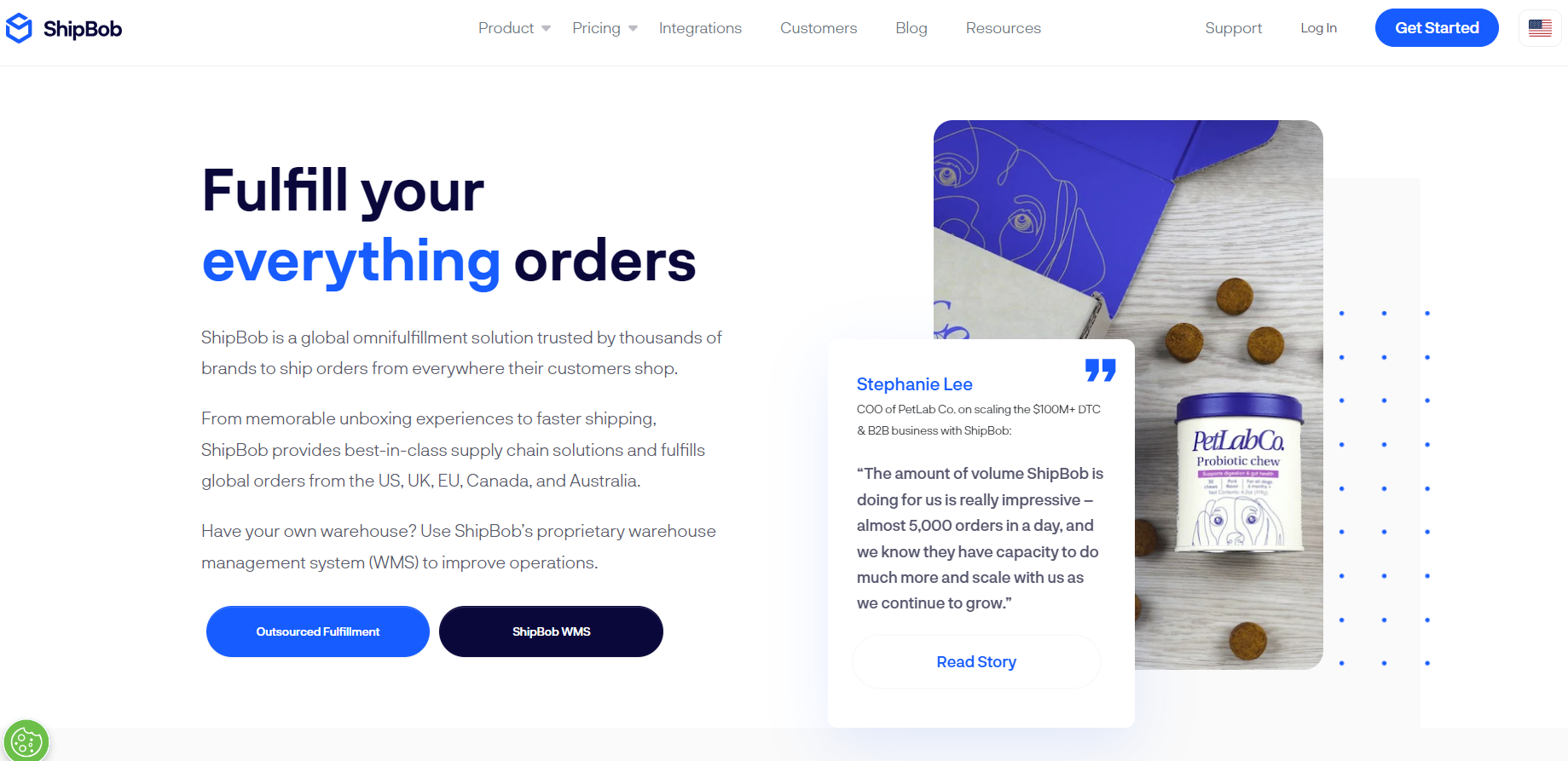
 Wide Range of Products
Wide Range of Products
The variety of products available in dropshipping is a major plus. From lucrative niches to accessing a vast inventory from multiple suppliers, you have the flexibility to offer a diverse range of products without the hassle of stocking inventory.
Additionally, product research tools such as Adserea, Sell The Trend, and AutoDS can be game-changers, helping you find winning products by analyzing market prices, engagement, customer analysis, and more.
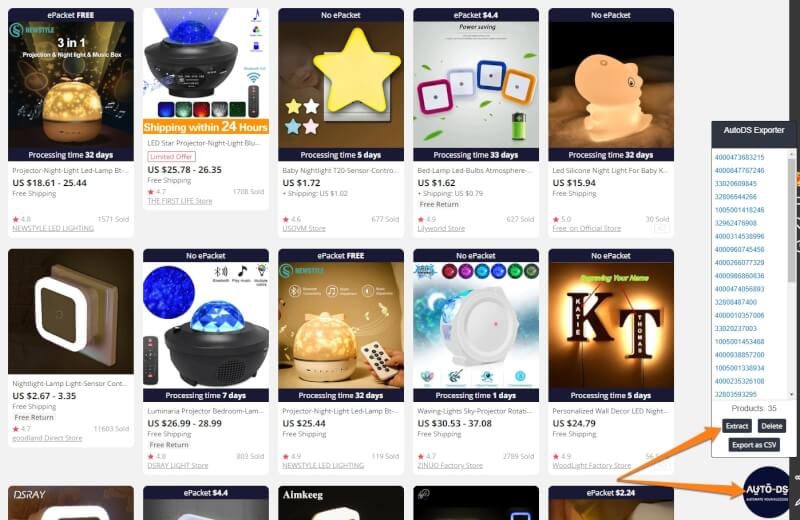
 Scalable Business Model
Scalable Business Model
Dropshipping’s scalability is a strong point. Without the burden of physical inventory management, scaling operations by adding new products or entering new markets becomes much simpler.
Growing dropshipping businesses can leverage sales volume to negotiate better pricing and terms with suppliers, increasing profit margins.
So, dropshipping is not dead at all, but it is very scalable.
 Flexible Work Schedule
Flexible Work Schedule
The dropshipping model offers a unique perk – a flexible work schedule.
Say goodbye to the constraints of physical inventory management and order fulfillment tasks, allowing you to work from anywhere.
The absence of physical inventory management also saves time. So, you can focus on crucial aspects like marketing, customer service, and expanding your product range.
Cons
 High Competition
High Competition
A positive mindset is crucial, especially when launching an online store. However, the dropshipping business is quite accessible, attracting many entrepreneurs due to its profitable niches.
Be prepared for fierce competition. It’s not all gloom, though—unique marketing techniques and paid advertising can help you stand out.
However, I must say, do not worry! I am also in a highly competitive dropshipping market, and I win my competition by using the proper tools. For instance, I use SpyFu to get data for my competitors.
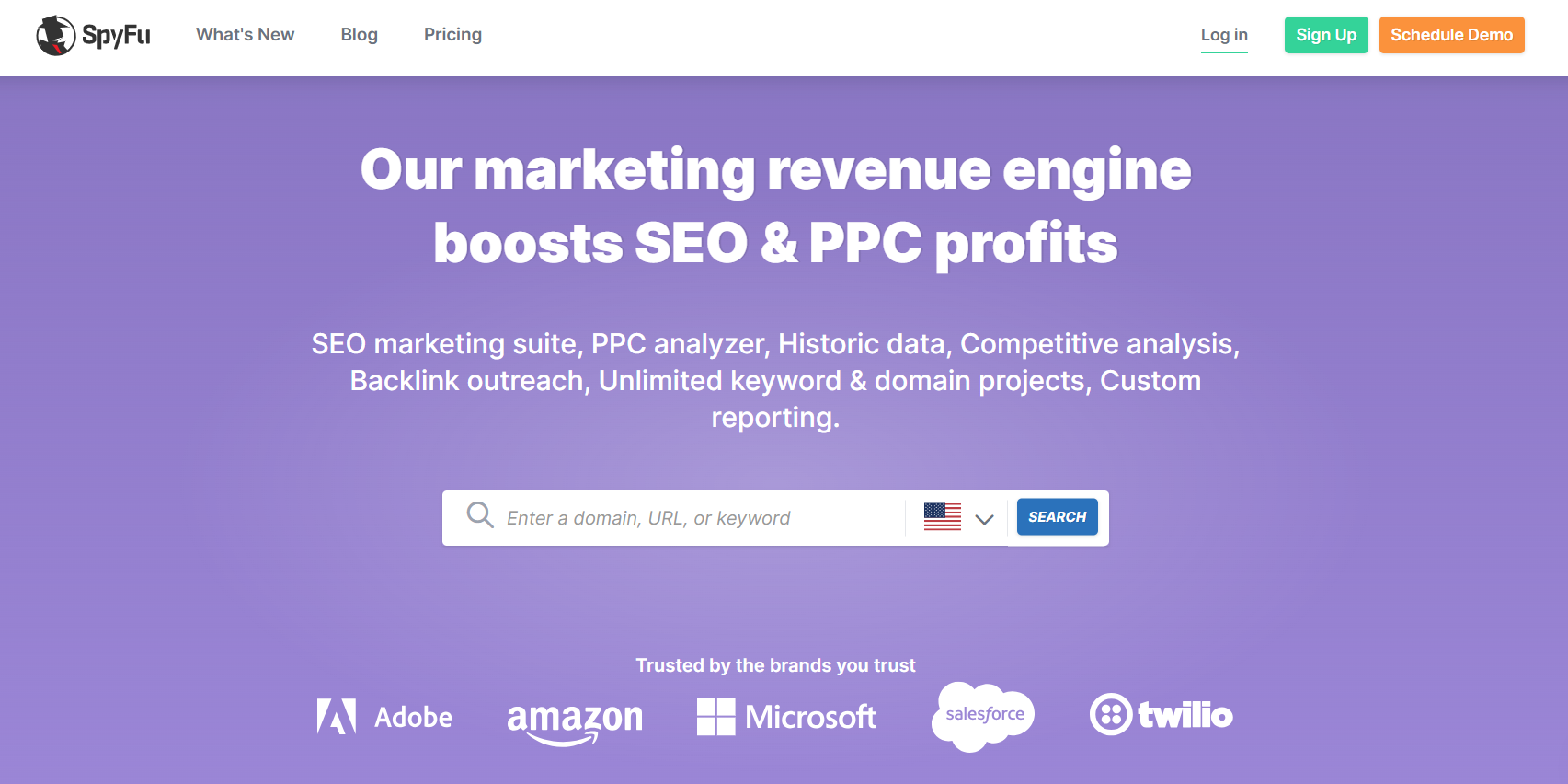
Additionally, by using this tool, I easily keep track of how certain keywords are performing and quickly identify who my online competitors are.
Moreover, it simplifies the task of investigating PPC campaigns and provides detailed information about the backlinks used by competitors.
 No Control Over Inventory
No Control Over Inventory
This is a significant issue, often stemming from choosing the wrong dropshipping suppliers responsible for inventory management, packing, and shipping.
Problems with inventory directly affect you, as customers will turn to you for issues like defects or delays.
It’s wise not to select suppliers blindly; seek help and consider reliable directories like the Dropshipping.com supplier directory.
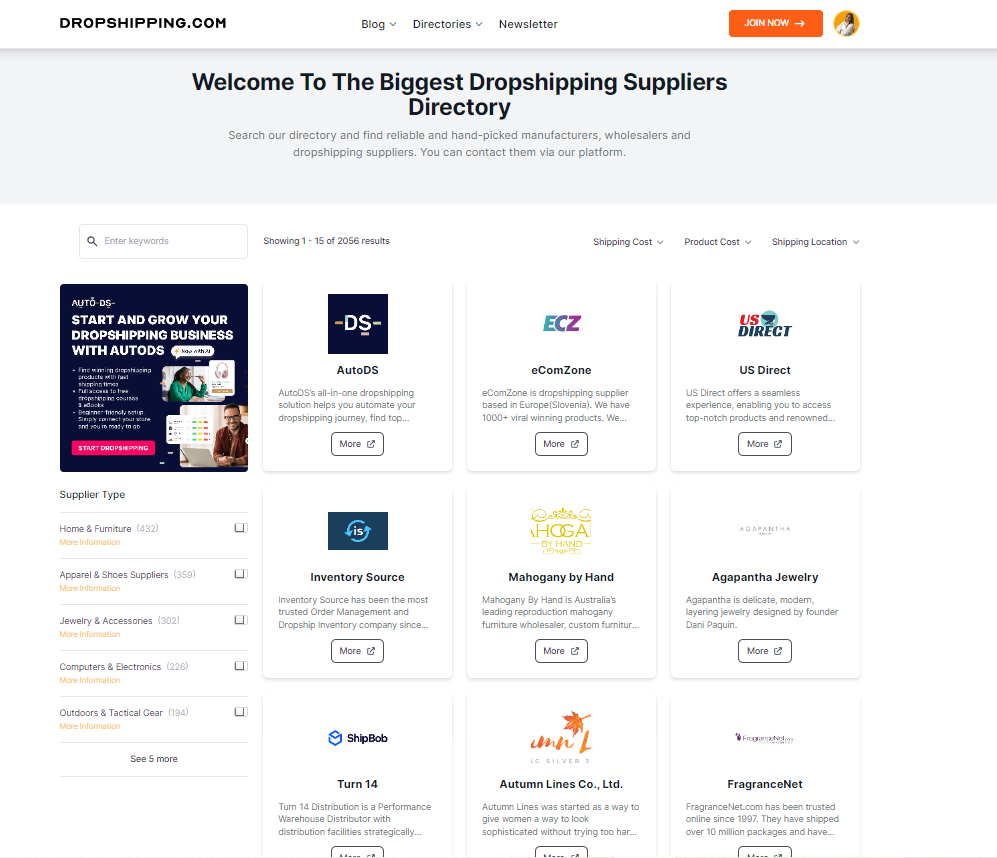
 Low Profit Margins In Certain Niches
Low Profit Margins In Certain Niches
Connected to the low entry barriers, increasing competition drives prices down, impacting profit margins. Thus, additional costs such as monthly advertising, store maintenance, and supplier fees can eat into your profits. So, let me explain why dropshipping is not dead.
Let’s say you’re selling sneakers at $2000 each, earning a 10% profit of $200. But remember, you’ve already used $50 for advertising. Deducting that, the remaining amount might cover essential costs like supplier and store maintenance fees, leaving you with no actual profit.
Now, imagine you sell ten of those sneakers. You’ve invested $500 in advertising and sold all ten, bringing in $2000. After subtracting the $500 for advertising and another $100 for fees, you end up with $1400 in your pocket. The takeaway? Sometimes, you need to invest more to earn more potentially.
While this example simplifies things, various dropshipping marketing strategies, like affordable social media ads, can help you reach a wider audience.
 Legal Issues
Legal Issues
Though not a common complaint, it’s crucial to be aware of potential legal issues that could lead to the shutdown of online businesses.
Ensure your suppliers are BBB-certified in the U.S. While most are verified, it is essential to learn about dropshipping taxes, payments, and accounting matters.

 Less Control Over Customer Experience
Less Control Over Customer Experience
Dropshippers face limited control over the customer experience, particularly in terms of shipping and packaging outcomes.
Quality control is challenging, and relying on third-party suppliers can lead to delays and uncertainties. To address this, consider ordering product samples and pay attention to packaging, delivery times, and order tracking.
Customer feedback matters, so counteract potential drawbacks by offering multiple contact options like live chat, phone, email, and social media.
FAQs about Dropshipping
1. Is dropshipping legal?
Absolutely, dropshipping is completely legal.
It doesn’t involve any unlawful activities and is a valid way to conduct business.
However, it’s crucial for dropshippers to adhere to local laws and regulations, ensuring they obtain the required licenses and permits.
2. Is dropshipping profitable?
Certainly, dropshipping can be a profitable venture when executed correctly. According to the most recent data, the global dropshipping industry will reach $372.47 billion in 2025. Additionally, experts anticipate the business to be valued at $500 billion by 2027.
What are some dropshipping product ideas?
Dropshipping opens up a wide range of product possibilities. Popular niches include fashion accessories, home decor, beauty products, and electronics.
Thus, trend research tools like Adserea, Sell The Trend, or Minea can help identify emerging markets for eco-friendly products, pet supplies, and fitness equipment.
3. Do I need to register a business entity to dropship?
Yes, it’s generally recommended to register a business entity before starting a dropshipping business. To register in the US, follow these steps:
- Choose a business name.
- Decide on a business structure (like sole proprietorship, partnership, LLC, or corporation).
- Register your business with the appropriate government authorities.
- Obtain an EIN from the IRS.
- Acquire necessary licenses and permits.
- Set up a business bank account.
- Understand sales tax obligations.
- Comply with federal regulations.
- Obtain business insurance.
- Create a professional website.
Always consult with a legal or business professional to ensure compliance with local, state, and federal regulations.

4. Is Dropshipping Dead?
In short, Dropshipping is far from dead and shows no signs of slowing down. We’ve witnessed its effectiveness firsthand and verified it through global eCommerce market size statistics and Google searches.
Thus, the platform is expected to reach $372.47 Billion in 2025. Plus, as on Google Trends, dropshipping has shown growth in the past year.
So, the dropshipping business model continues to thrive, and it seems like is very much alive!
5. Can I Get Rich With Dropshipping?
The dropshipping model is low-risk and highly profitable, capable of becoming a full-time income source.
Success, however, requires developing skills like copywriting and paid advertising. Getting rich quickly is challenging without learning these valuable skills, but it’s possible with patience and the right approach!
6. Can I Start Dropshipping With No Money?
Certainly! You can start dropshipping with no money, though this approach has advantages and disadvantages.

7. Can I Start a Dropshipping Business As a Teen?
Absolutely! Despite a few challenges, teens can start a dropshipping store. The main obstacle involves not having a personal bank account or ID for verification.
A workaround is to use a parent’s or older sibling’s bank account for transactions.

Also, check out the Best Ecommerce Business Ideas For Teens in 2025
8. What Is The Average Dropshipping Profit Margin?
The average dropshipping profit margin ranges between 15% to 20%. However, this may vary from one dropshipping niche to another.
9. Is Shopify Dropshipping Real?
Yes, Shopify dropshipping is real. Shopify is a legitimate platform where you can start a dropshipping business by creating your store.
When using Shopify for dropshipping, you source products from suppliers and list them in your store. When a customer orders a product, the supplier ships it to them.
While Shopify has a user-friendly interface and integrations with many dropshipping apps, to maintain your store’s reputation, ensure your suppliers are reliable and you provide good product quality.
10. Is AliExpress Dropshipping Profitable?
Yes, AliExpress dropshipping can be profitable, but it requires planning and strategy. Many entrepreneurs use AliExpress to source products because of the wide range of products and low prices.
To make AliExpress dropshipping successful, focus on finding winning products that are trending and in demand. While the platform offers low-cost products, you must factor in shipping costs and product quality to satisfy customers.
By targeting the right audience and using the right marketing, you can make good money with AliExpress dropshipping.
11. Is Amazon Dropshipping Worth It?
Amazon dropshipping can be worth it if done right. You can tap into Amazon’s massive customer base and established marketplace and get your products visible immediately.
However, strict policies and guidelines must be followed to avoid penalties, such as being the seller of record and meeting Amazon’s standards for packaging and shipping.
Shipping costs and product quality also play a big role in customer satisfaction.
12. Can I Dropship on eBay?
Yes, you can dropship on eBay, but it has its own rules and challenges. Dropshipping on eBay means listing products you source from third-party suppliers and then having those suppliers ship directly to your customers when a sale is made.
However, eBay requires you to maintain product quality and handle customer service.
Also, eBay’s dropshipping policy prohibits sourcing products from other retailers like Amazon or Walmart.
To succeed you need to work directly with dropshipping suppliers and make sure you can meet eBay’s shipping and customer satisfaction standards.
13. Is dropshipping going to become outdated in 2025?
Not at all—but it is changing. According to experienced sellers and marketers on Quora, the core model of dropshipping remains valid, but basic methods no longer work.
Gone are the days when you could just list trending items from AliExpress and expect sales. Today, customers demand faster shipping, better branding, and real value.
14. What’s replacing traditional dropshipping?
Dropshipping is evolving into models that emphasize:
- Private labeling
- Faster delivery from local or warehoused suppliers
- Better product quality control
- Customer-focused branding
Also, some dropshippers now partner with U.S.-based fulfillment centers or use hybrid models with in-house stock for bestsellers.
15. Why do people think dropshipping is dying?
It’s mostly due to:
- Oversaturation of generic stores
- Slow shipping from platforms like AliExpress
- Poor customer experiences These factors created a bad reputation. But those who innovate and focus on customer experience are thriving.
16. Can you still make money with dropshipping in 2025?
Yes—if you’re smart about it. Many answers stress the importance of:
- Choosing a niche
- Building a real brand
- Investing in ads and SEO
- Using tools like Shopify, CJ Dropshipping, Spocket, or Zendrop to offer faster delivery
17. What’s the future of dropshipping beyond 2025?
Expect it to become more professionalized. Customers are more educated now, and platforms like TikTok Shop and Amazon are tightening their rules. So, future-proof dropshippers will:
- Prioritize customer retention
- Focus on unique offers
- Build branded, content-rich stores
As one Quora expert said, “Lazy dropshipping is dead. Strategic dropshipping is just getting started.”
Conclusion
So, is dropshipping dead in 2025? No—but the lazy way of doing it is. If you’re still chasing overnight wins or copying viral products without strategy, you’ll burn out fast.
But if you’re ready to put in the work, build a real brand, and adapt to what actually works today, then dropshipping is still one of the best low-risk ways to start an online business.
Here’s my advice: Don’t listen to the noise. Learn the tools, pick a niche that solves real problems, and focus on delivering value.
Success in 2025 belongs to those who treat dropshipping like a real business—not a side hustle shortcut.
The opportunity is there. What matters is how you show up.
















![The Top 21 3PL Companies Compared [2025 List & Guide]](https://images.weserv.nl/?url=https://prod-dropshipping-s3.s3.fr-par.scw.cloud/2024/03/Frame-3922469.jpg&w=420&q=90&output=webp)